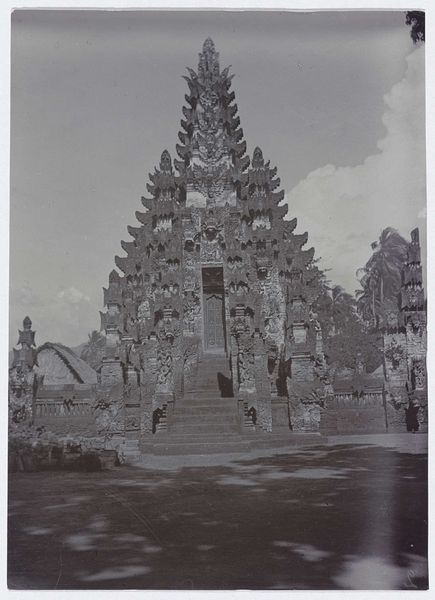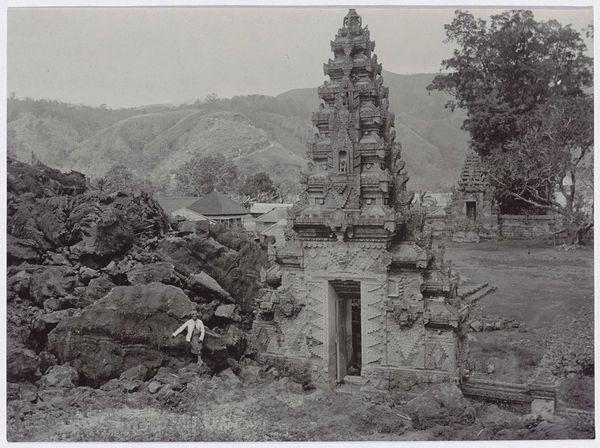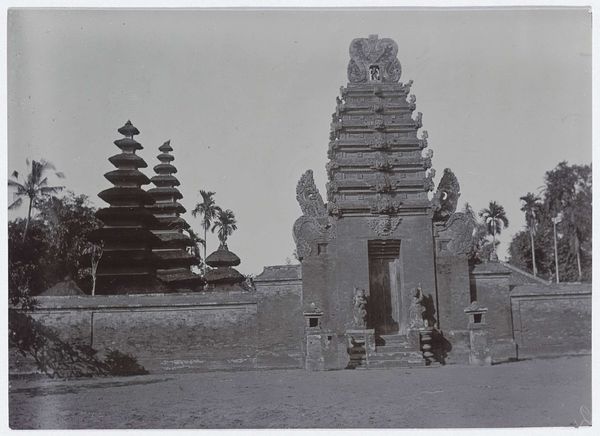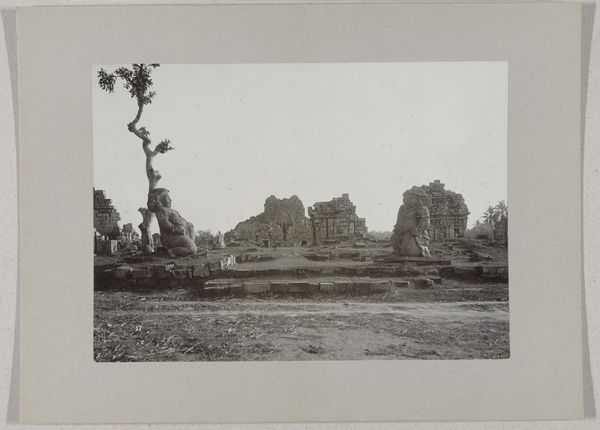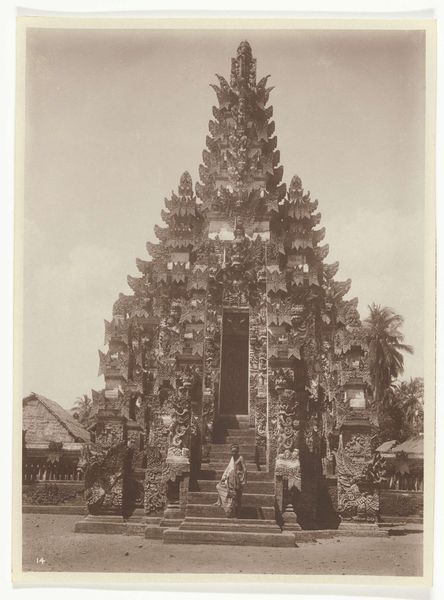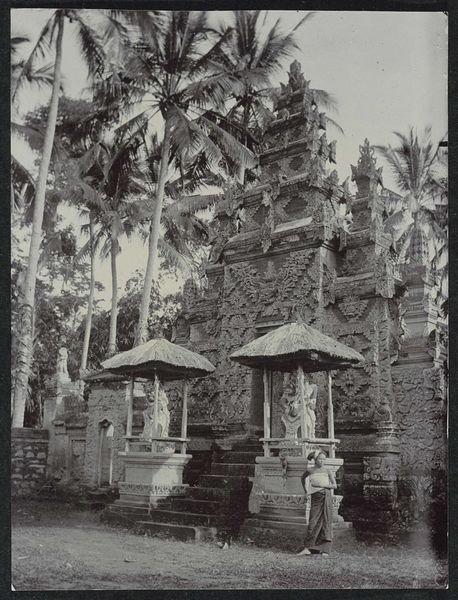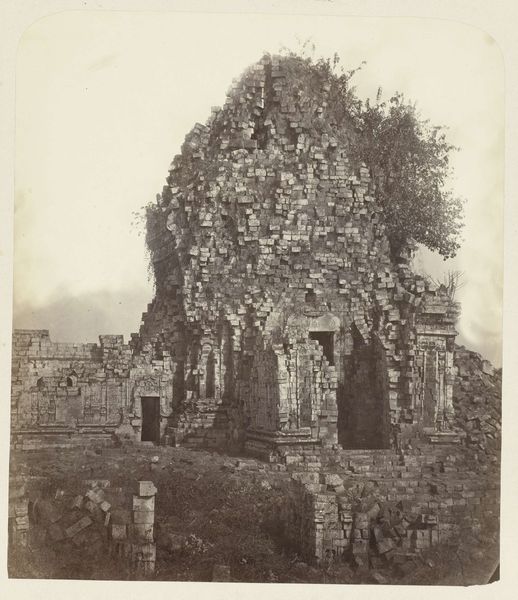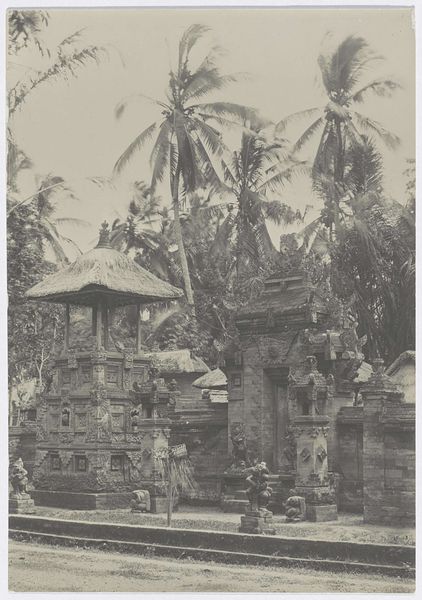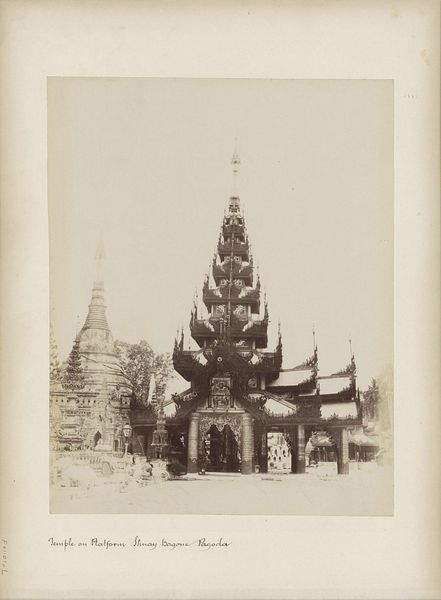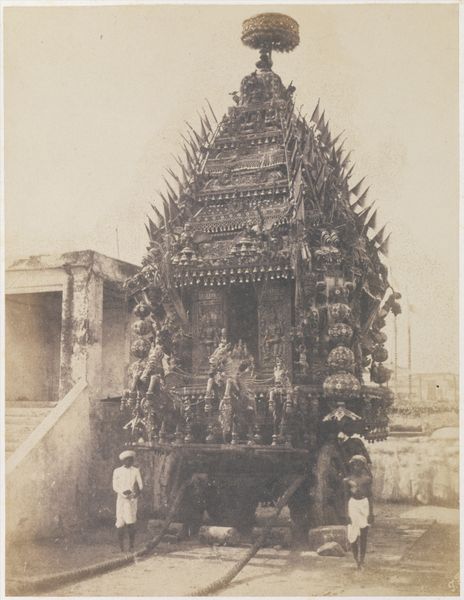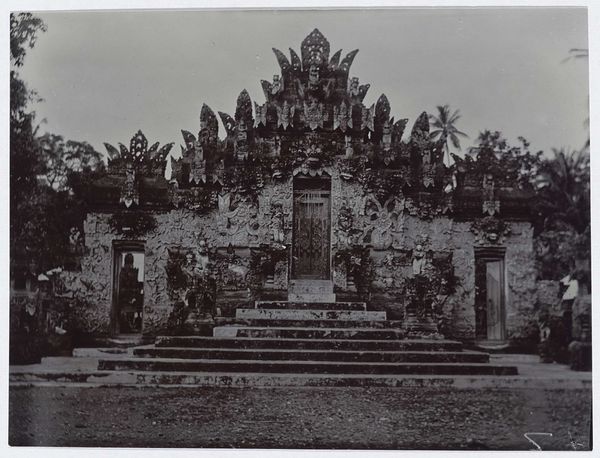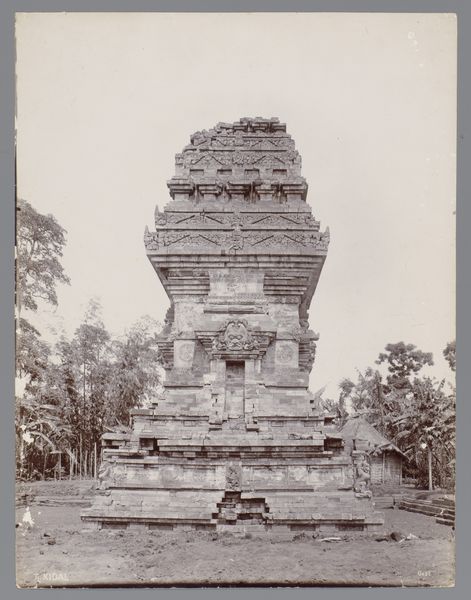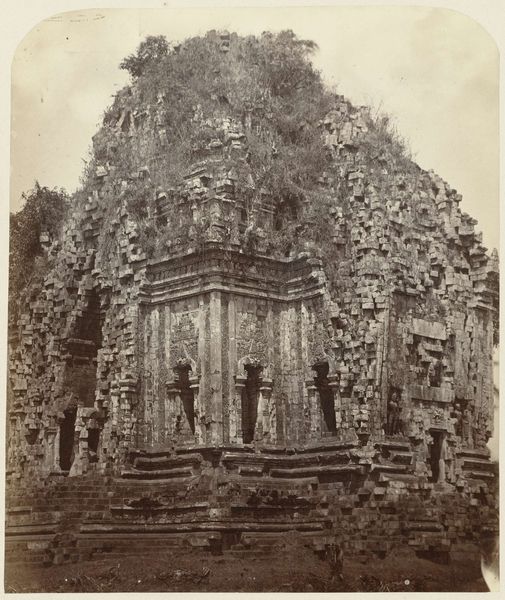
Vooraanzicht van de rijk geornamenteerde tempelpoort van de pura Batur 1900 - 1915
0:00
0:00
print, photography, architecture
# print
#
asian-art
#
landscape
#
nature
#
photography
#
ancient-mediterranean
#
architecture
Dimensions: height 112 mm, width 85 mm
Copyright: Rijks Museum: Open Domain
Editor: Here we have a print titled "Vooraanzicht van de rijk geornamenteerde tempelpoort van de pura Batur," which translates to "Front View of the richly ornamented temple gate of Pura Batur". It's a photograph, taken sometime between 1900 and 1915 by Johanna Hermina Marmelstein. It's mostly monochromatic, but I’m struck by the stark contrast between the ornate architecture and the rough, rocky landscape. What do you see in this piece? Curator: This image speaks volumes about the intersection of culture, religion, and the often-unacknowledged force of nature. Consider the historical context: this photograph was taken during a period of intense colonial influence in Southeast Asia. How might the photographer, a Westerner, have perceived and portrayed this sacred Balinese space? Editor: I hadn’t thought about the colonial aspect. The temple does seem almost…staged against that backdrop of rocks. Curator: Exactly! The romantic, almost sublime depiction of ruins was a popular trope in Western art and photography, often reinforcing a narrative of exoticism and the 'decay' of non-Western cultures. Who held the power in this dynamic? Whose story was being told, and whose was being obscured? Also, what’s your read on the foreground full of stones? Editor: They dominate the frame! Almost like the natural world is reclaiming the temple. Curator: Precisely! The photograph highlights a tension – between human creation and the enduring power of nature, and also the complicated legacy of cultural representation and power dynamics inherent in early photography. I am also considering that it depicts the Pura Batur area right after the eruption of Mount Batur. Does that change your view? Editor: Absolutely. It's no longer just about colonial viewpoints but also resilience, destruction, and rebirth. Curator: It makes us think about how the historical narratives change based on who tells them and under which circumstances. A potent reminder of photography’s role in shaping perceptions and, potentially, reinforcing power structures. Editor: I’m going to look at early 20th century photography a bit differently now! Thanks for the insights.
Comments
No comments
Be the first to comment and join the conversation on the ultimate creative platform.
